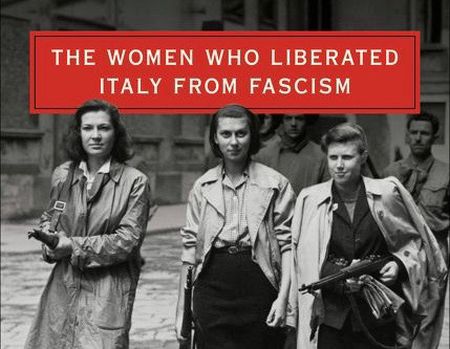Review of A House in the Mountains
Random House Canada. 2019. 348 pages.
Accompanied by real-life photographs and vivid imagery, Caroline Moorehead’s non-fiction historical bestseller, A House in the Mountains; the Women who Liberated Italy from Fascism, tells the story of four strong Italian women -Ada, Frida, Silvia, and Bianca- who risked their lives for the love of their motherland. The Partisan movement was formed to fight against Mussolini’s Fascist and Hitler’s Nazi regimes during World War II. The book is primarily set around the northwest city of Turin, a vital location of the Resistance. Moorehead follows the historical event of WWII when Italy changes sides in 1943 resulting in German occupation. And concludes at the life-altering moment in April 1945 when Mussolini is shot and publicly hanged in Milan. What makes the Partisan movement even more remarkable is the number of female members, such as Moorehead’s characters, that demonstrates an unmatched strength.
A House in the Mountains leaves goosebumps on the reader’s skin. Moorehead’s use of photographs mixed with excerpts from real-life diaries, letters, and publications invites the reader into the individual’s most intimate thoughts of love, fear, and dedication. She seamlessly weaves the life-threads of these women by visiting and revisiting key individuals and relating them to one another within the heart of the Resistance. Highlighting not only the soldiers’ history, but also producing a spotlight on those who worked in the dead of night, on the women who performed the same missions as the men, who faced the same dangers, but did so supporting their community of children, elders, Jews, and fellow women.
Beyond the plot, the novel is riddled with messages of female empowerment. At the centre, Moorehead’s metaphor, “not everyone is born a lion, but lions can be made,” is a plea of encouragement for all females, big or small, young or old, to step up to the injustices affecting them. Moorehead captures the vivacious energy of these women, who “challenge the historical image of submissive, cowed, Italian women” by becoming soldiers of the night; in order to solidify Ada’s declaration that “the mothers of the resistance have learned that they are the builders of the future”. It is important to note that Moorehead is not naïve to the brutal outcome for some of the female partisans, and she refuses to shy away from describing the torment of their imprisonment, tortures and rapes.
Regardless of how intriguing Moorehead’s narrative is, it is fact-heavy, meaning that it will work for some but not for all. The interweaving of characters and historical facts about World War II, with a multitude of different names, dates and military code names, forces the reader’s unmoving attention. However, being of Italian descent, I applaud Moorehead’s success in educating the masses about an essential part of history that would otherwise be unknown to the general public outside of Italy. There is such a rich history of small-town determination throughout Italian history, and Moorehead makes this even more accessible with her deconstruction of military events by replacing them with her lively imagery and poignant word choice.

